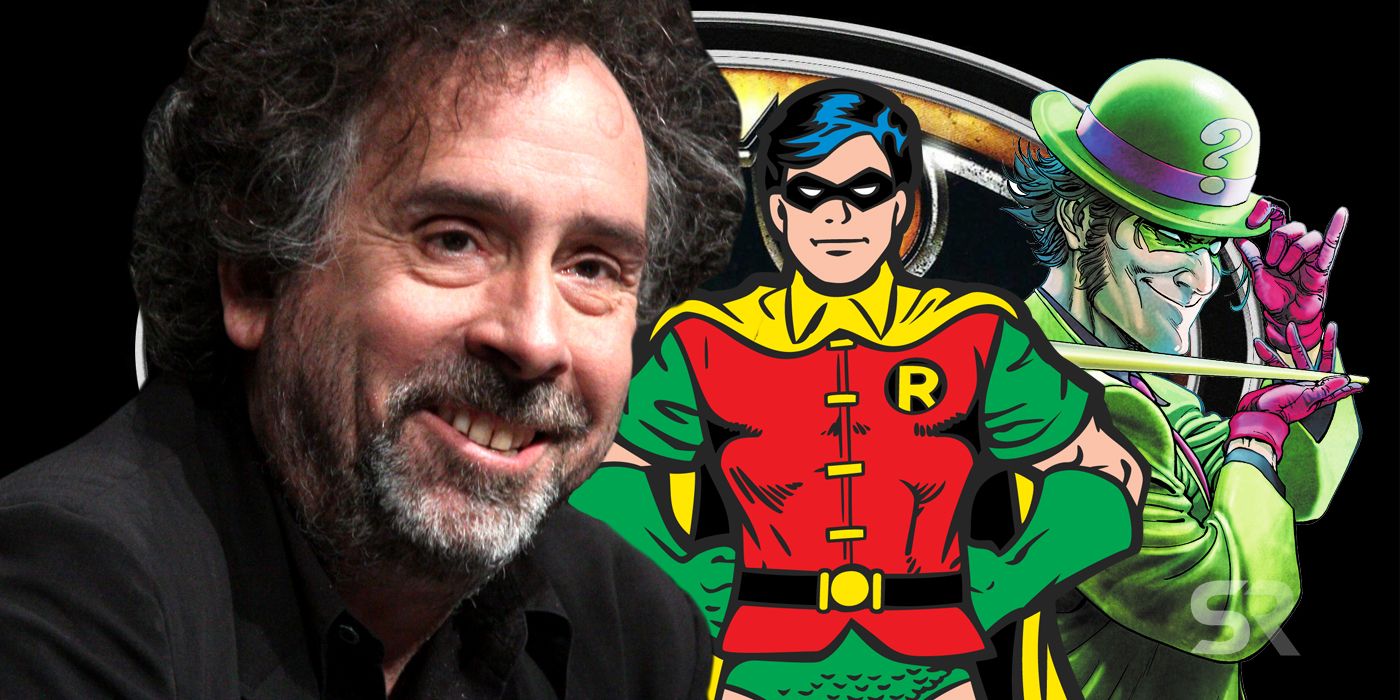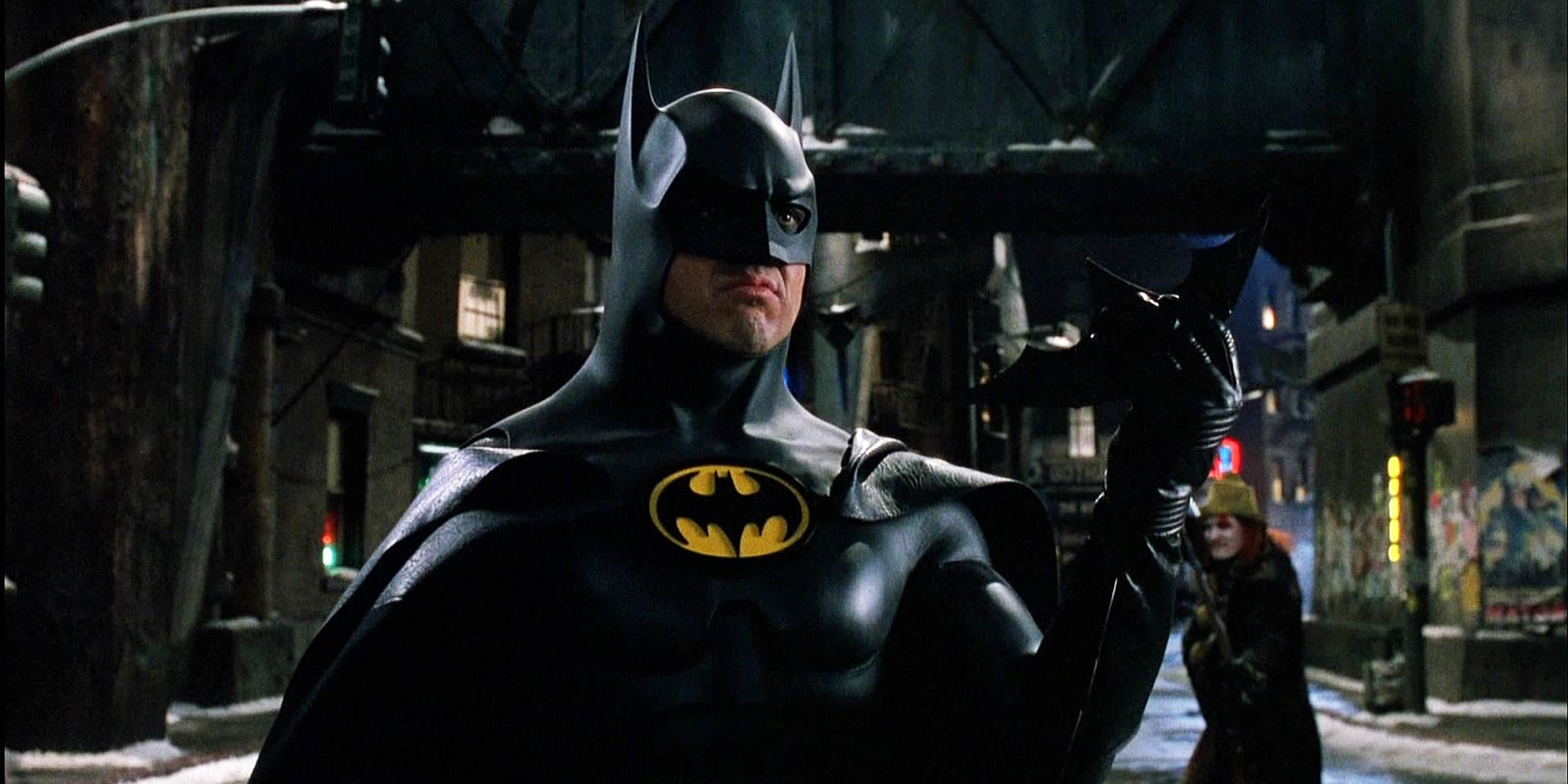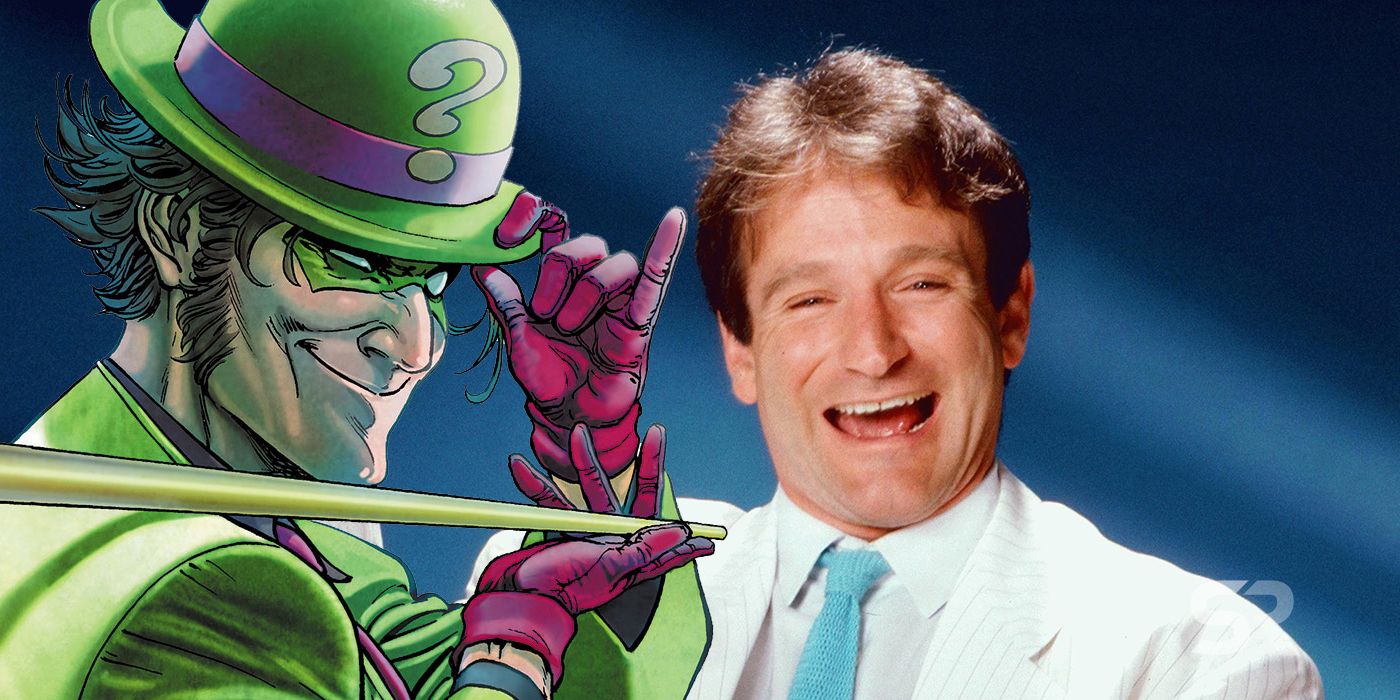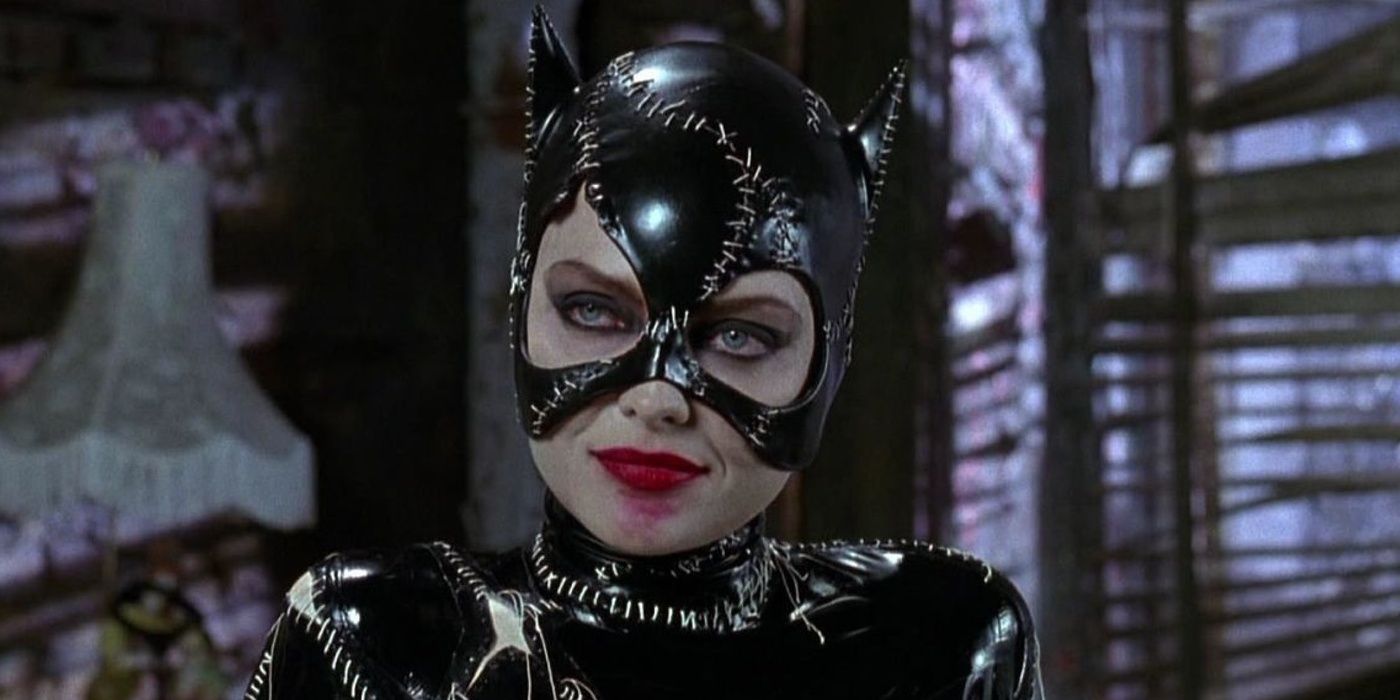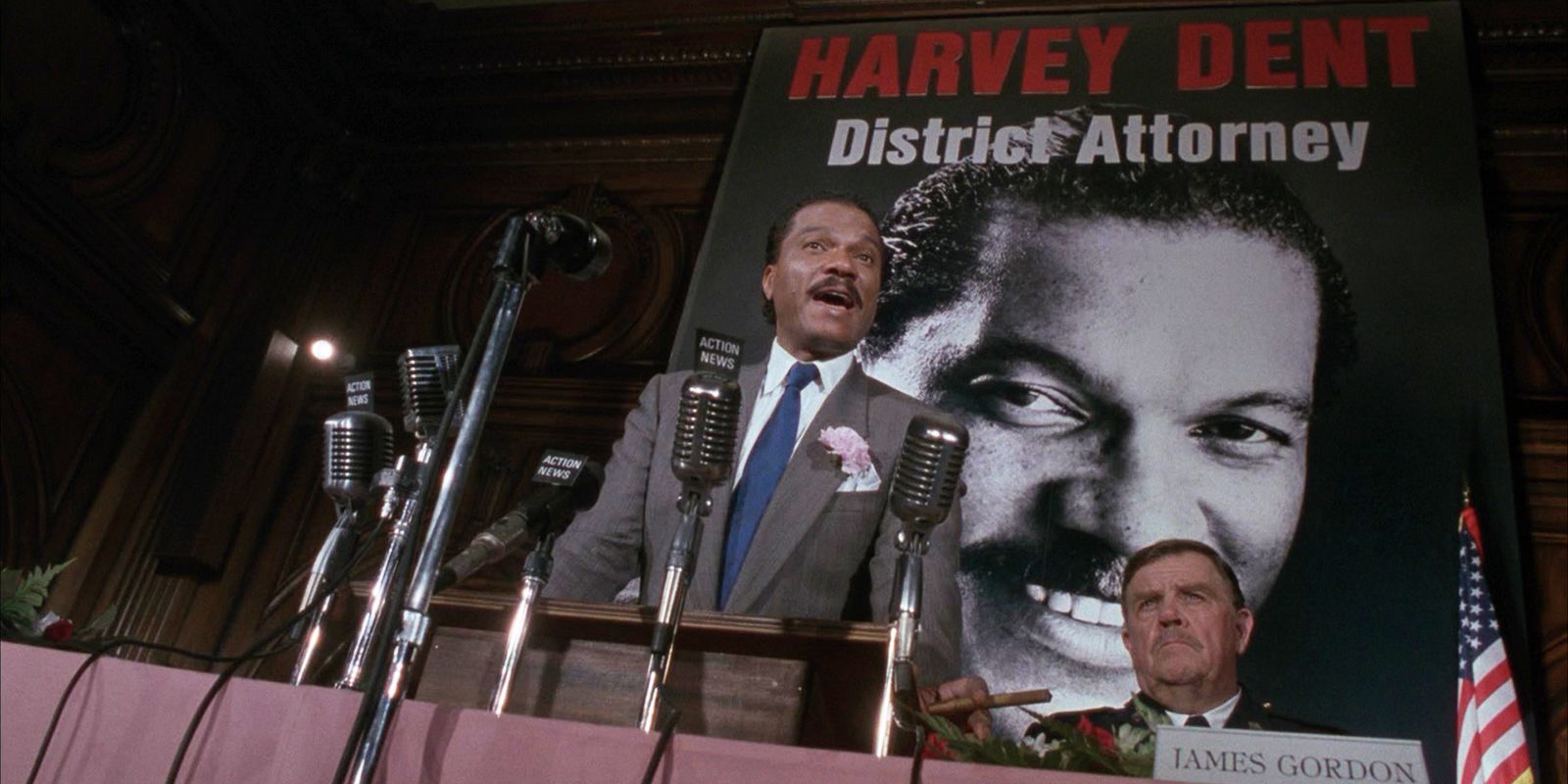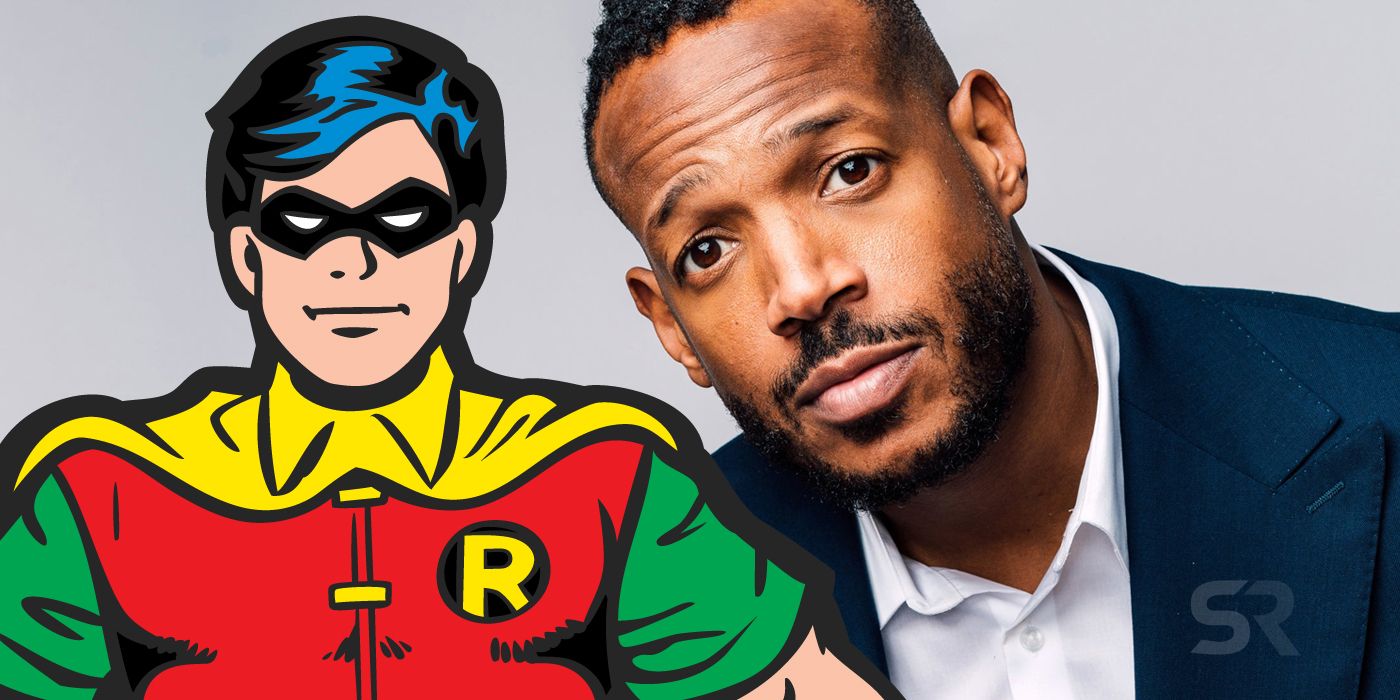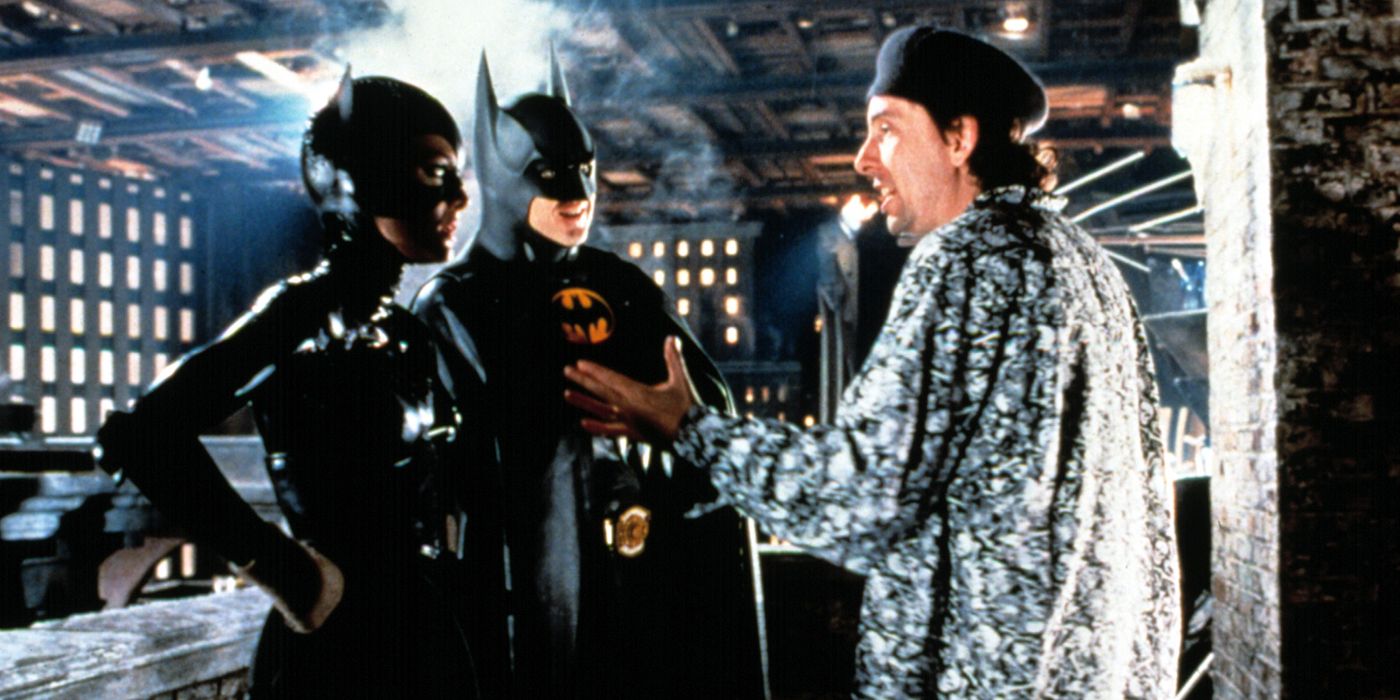For all of Batman's cinematic near-misses, arguably the most intriguing was the missing third film by Tim Burton, which would have followed Batman Returns. Ultimately, ructions behind-the-scenes and a misguided desire to push Gotham's Dark Knight into family-friendly (and merchandising-friendly) waters meant Burton's vision was scrapped in favor of bringing in Joel Schumacher.
Batman was first adapted to the big screen in 1943, in a black and white 15-chapter serial with Lewis Wilson as the famous superhero and Douglas Croft as Robin. Since then, the Dark Knight has gone through many versions, but his cinematic history can be divided into three: the Tim Burton-Joel Schumacher series, The Dark Knight trilogy, and the DC Extended Universe. Burton's Batman (1989) had proved a critical and financial success and inspired the equally successful and unforgettable Batman: The Animated Series. Its success also made way for Batman Returns in 1992, and with Burton and Keaton back the sequel received positive reviews and did very well at the box office, despite issues with commercial partners. It was when the moment arrived to make a third Batman film that trouble began.
Titled Batman Forever, and released in 1995, the third movie had Joel Schumacher as director and a whole new cast, with Val Kilmer as Batman, Chris O’Donnell as Robin, and Tommy Lee Jones as Harvey Dent/Two-Face. It was followed by Batman & Robin two years later, now with George Clooney as Batman, and it was a very bad ending to the series, with the film being regarded as one of the worst superhero films ever made. All these changes in cast, director, and story weren’t part of the plan, and Burton had ideas for a third Batman film that, had it happened, would have taken the series in a completely different direction.
Burton’s Batman 3 Would’ve Been A True Sequel To Returns
Tim Burton’s Batman 3 would have reportedly been titled Batman Continues, which is pretty much what the film was going to do. Batman Continues would have had Keaton as the Caped Crusader once again, and would have counted with Michelle Pfeiffer and Billy Dee Williams reprising their roles as Catwoman and Harvey Dent, respectively. By having all these characters and their actors back, Batman Continues would have brought together all three films (Williams had opted out of Batman Returns and Christopher Walken’s Max Shreck was added instead), and would have served as a proper sequel to Batman Returns. Basically, it would have had the cohesion that Batman Forever lacked, but the title would have still been bad.
Robin Williams Was Eyed For The Riddler
Very much like Batman Forever, Batman 3 included The Riddler, but Burton had a very specific idea for the character. His plan was to have the late great Robin Williams play Edward Nygma/Riddler, but the comedian had a weird history with the Batman universe... and Burton. Williams had initially been approached to play the Joker in Batman, but Jack Nicholson ultimately got the role. Burton then approached him again in hopes that he would play The Riddler in Batman 3, but when Burton left and Schumacher arrived, those plans changed and Jim Carrey became The Riddler – and so Robin Williams never got to be in a Batman film.
Michelle Pfeiffer’s Catwoman Was Expected To Return
Michelle Pfeiffer’s Catwoman was revealed to be alive and well at the end of Batman Returns, making it possible for her to return in a sequel. She was one of the actors that would have come back for a third Batman film with Burton on directing duties but it’s unknown what her role in the story would have been. Presumably, there would have been more expansion in the alluring dynamic established between her and Keaton's Bat. However, once Warner Bros. started to develop Batman Forever without Burton, a Catwoman spin-off was announced, with Pfeiffer reprising her role and Burton attached as director. The film would have opened after her collapse in Batman Returns, following an amnesiac Selina Kyle in what amounted to the Batman film universe's version of Las Vegas. In the end, Burton dropped out and the project was left in development hell for years, until it became the critically panned - and completely unrecognizable - Catwoman with Halle Berry as the title character.
Billy Dee Williams’ Harvey Dent Likely Would’ve Become Two-Face
Billy Dee Williams played Harvey Dent in Batman and was completely absent from Batman Returns, but it was still possible for him to come back in a future sequel, particularly as Williams was contracted for more than one appearance. An early draft of Batman Returns had everything set up for Harvey Dent to become Two-Face in Batman 3, with Catwoman shocking him at the end, thus prompting his villainous transformation. Those scenes were rewritten to fit Walken’s Max Shreck, but Williams’ return was still a possibility in the third movie. Sadly, Schumacher had other ideas and instead cast Tommy Lee Jones as Two-Face, who was reluctant to accept the role but did so after his son’s insistence. Ultimately, Jones' version of Two-Face was little more than a cosplaying Joker clone, and while the performance was a lot of fun, it wasn't what Batman fans would have expected of Dent.
Marlon Wayans Was Contracted to Play Robin
Perhaps the most surprising element from Batman 3 was that it would have had Marlon Wayans as Dick Grayson/Robin, and Wayans’ history with the Batman series is actually a pretty interesting one. Wayans was supposed to play Robin in Batman Returns, but Burton decided to keep him for a future film as there were already too many characters in the story. Wayans even attended a wardrobe fitting and was signed for a sequel, and could have made his debut in Batman 3 had Schumacher not had different ideas and cast Chris O’Donnell instead. However, Wayans received a penalty fee as his contract allowed him the option of reprise, and as of 2018 he was still receiving royalty payments.
Why Tim Burton’s Batman 3 Didn’t Happen
Rather than being a clear-cut case of creative differences, Burton’s departure was provoked by an external force, or several to be precise. Infamously, it was McDonald's who seemed to take the sharpest end of criticism in years following Batman Continues' cancelation, and it's fair to say they were a major agitant. In the run-up to Batman Returns' release, Warner Bros' had doubled down on the 1989 original's success by bringing in an unprecedented number of merchandising and commercial partners. As reported by the LATimes reported in 1992, the key partners were McDonald's, Diet Coke, and Choice Hotels with an astonishing 120 product tie-ins planned including "talking toothbrushes, roller skates, and, naturally, T-shirts... boxer shorts, sunglasses and throw pillows... beach towels, beanbag chairs, weightlifting gloves and, yes, mugs." Nothing on that scale had really been considered before. That meant a huge responsibility on the movie to try and move merchandise for the partners who'd paid licensing fees, and with partners like McDonald's banking on Returns being a family movie, it all backfired very quickly. As Burton himself put it: "I think I upset McDonald's. [They asked] ‘What’s that black stuff coming out of the Penguin’s mouth. We can’t sell Happy Meals with that!’"
They weren't the only ones offended or put out by Burton's creative vision. Toy companies had to be appeased by a claim that marketing would be reliant on the release of Batman: The Animated Series, and actual movie tie-in toys are conspicuous by their absence from that run of releases. Kenner simply released a line of Batman figures with absolutely no link to Returns, despite advertising claiming they were indeed tie-is. Problematically for Warner Bros, who had to answer to their partners - including McDonald's who were being castigated by Christian organizations for their association with the movie - the key license holders had plowed an almighty $60 million into TV advertising, roughly three times as much as WB spent on marketing the movie itself.
McDonald's had ignored Kenner's approach to avoiding specific links to Batman Returns and transformed their restaurants into Gotham City, running a commercial campaign that merrily sang "it's Batman time at McDonald's" and proving to anyone who subsequently saw the movie how little they knew of Burton's vision. Batman Returns screenwriter, Daniel Waters - who had been a big part of Burton's commentary on freaks - told 2005 documentary Shadow of the Bat – Part 4: Dark Side of the Knight that watching early screenings made it obvious there was a huge disparity in expectations and what was delivered at an audience level too. “It’s great. The lights are coming up after Batman Returns, and it’s like kids crying, people acting like they’ve been punched in the stomach, and like they’ve been mugged. Part of me relished that reaction, and part of me to this day is like, ‘Oops.’”
Warner Bros learned their lesson the hard way, and though the box office spoke positively, the commercial partners clearly didn't and Joel Schumacher apparently represented a safer option for the retitled Batman Forever. After all these years, it’s highly unlikely Burton would go back to the superhero genre, especially Batman’s universe, so his Batman 3 will only live in the imagination of fans. Of course, it’s impossible to say if the film would have saved the series or not (though Batman & Robin probably wouldn’t have happened, at least not as it did), but it would have surely brought together all the films and made the series feel as such.

